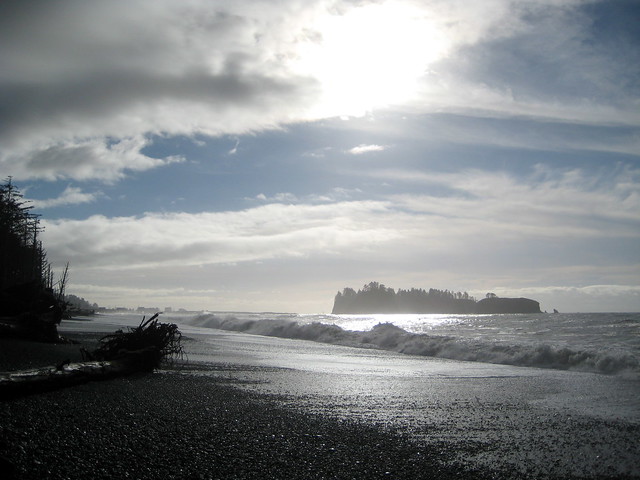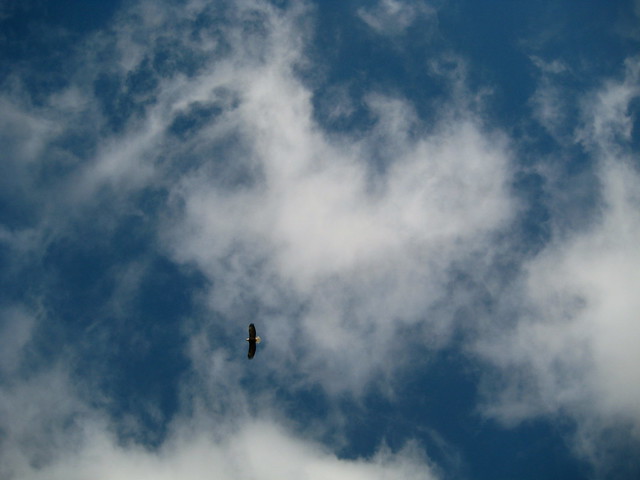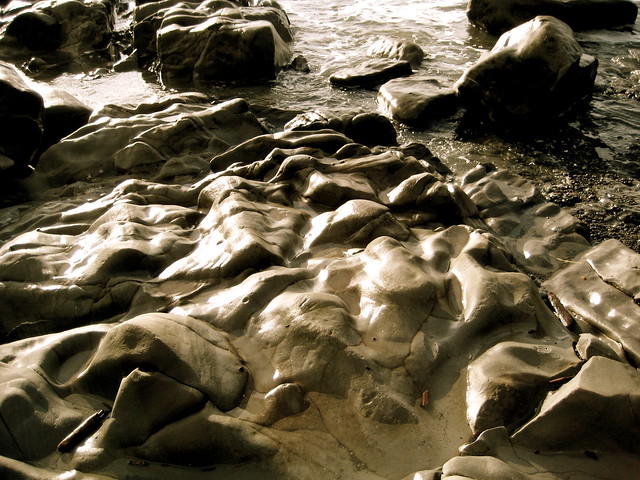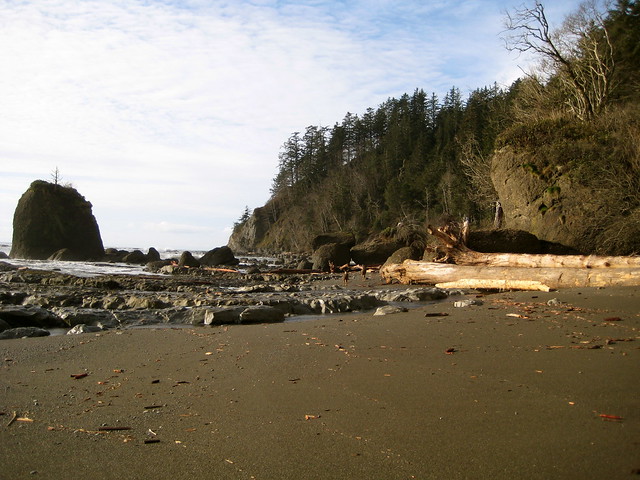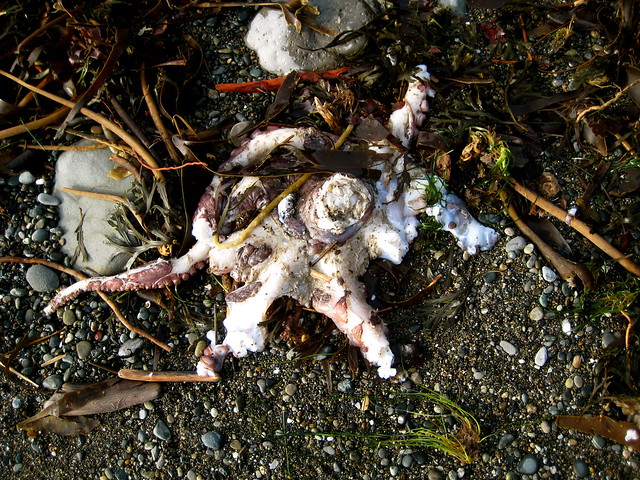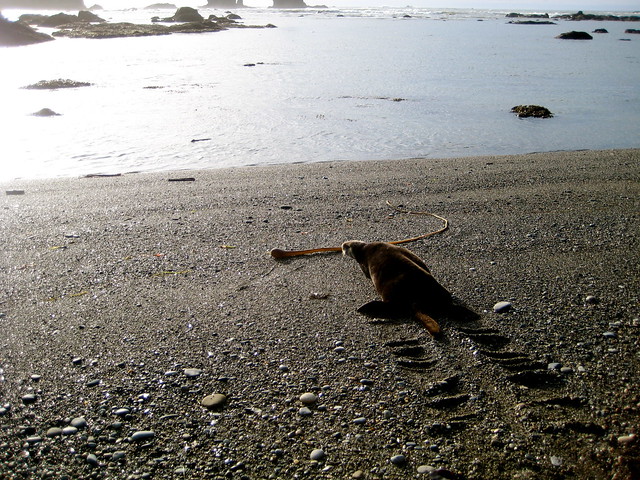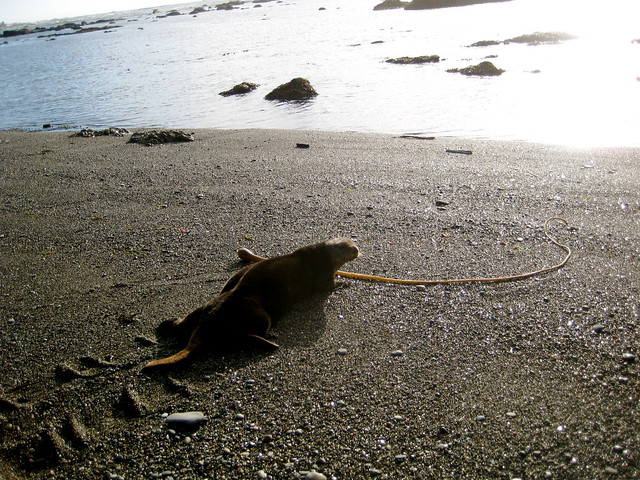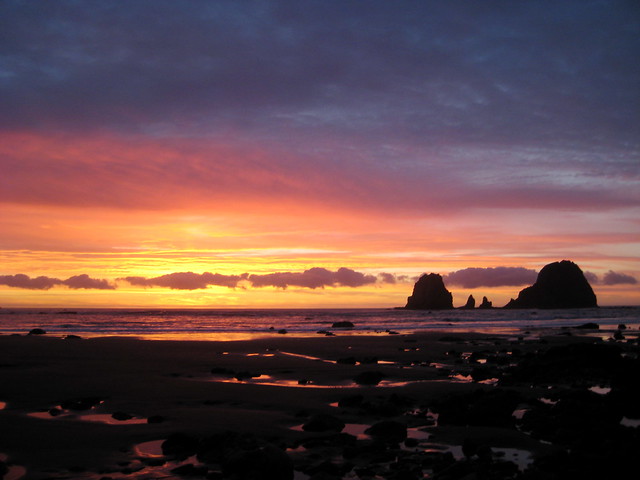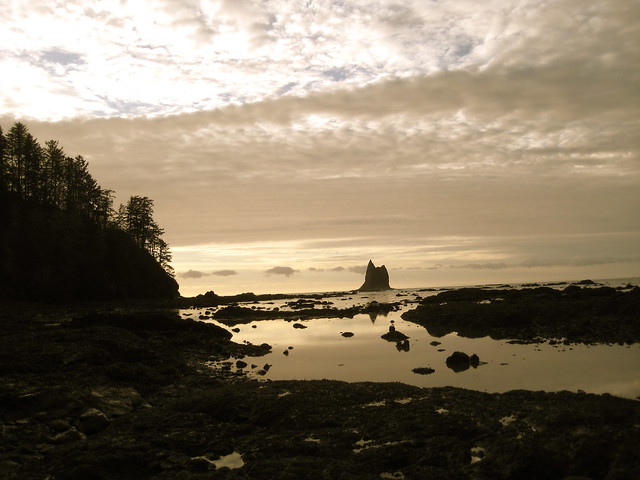Along the Wild Coast
Arriving at Rialto Beach just past 1:00 PM, I took a few minutes to stuff my food into the bear can I had borrowed from the Ranger Station on my way out. The cans are required to keep food secure not from bears, but from marauding raccoons. This was to be the third year I had hiked the Olympic Coast in Winter and, outside of the Sierra Nevada, these have been the only times I’ve carried a bear can. Still, thanks to the warmer temperatures along the coast, even with the can my pack feels light compared to what I must carry this time of year when high in the mountains.
High tide had been at 11:30 AM. It is still high enough to make beach-walking difficult. I opt to make my way through the thick trees and marsh instead of braving the beach. There are no cars in the parking lot when I leave, but I surprise two people panning for gold along a small creek. Neither are talkative. When I ask if they had found anything, the one only replies “a little”. I don’t know if that is the truth, or if he was just anxious to get me gone.
I spend an hour in the woods. The tide is low enough now that I can make my way down to the beach, exchanging thick trees for wet sand. Occasionally I have to run up the beach and jump on top of driftwood to escape from the occasional wave, but for the most part the way is easy going between Rialto and Hole-in-the-Wall.
The area is thick with Bald Eagles. Every 15 minutes or so I spot one in a tree, or landing on a sea stack, or one flying over the ocean. At one point I see two eagles eating on a large fish head that had washed up on the beach. (I don’t know what kind of fish, but the head was close to the size of a football.) The two are eating just on the other side of a large boulder. We don’t notice each other until I come around the rock, at which point they jump and fly off. At a distance of about 10 feet, that’s the closest I have ever been to an eagle.
At Hole-in-the-Wall, the sandy beach comes to an end for a good while. Now begins the obstacle course that defines a walk along the wild coast. Piles of driftwood, tide pools, slippery rocks, and tall headlands all present a much different challenge from the steady plodding that characterizes walking in the mountains. The various balancing tricks, pull ups and push ups that are required make one thankful for a well packed backpack.
After rounding one headland I come upon two deer, out looking for whatever seafood it is that deer fancy. They don’t seem too concerned about me, but eventually bound up the steep cliff as I close in.
Around the next headland there’s an octopus lying in the sand. It has been partially eaten by something.
The tide is out now. I walk blissfully along a rare sandy stretch of beach that doesn’t require much attention, and find myself surprised by a dark brown spot ahead of me. My first thought is Marmot, but they belong in the mountains, not the coast. Then I think Badger, but the tail is wrong and they also had no business on the coast. An Otter! I couldn’t identify it at first, as I had no experience to link it to. This was the first time I had seen an Otter – leastwise, on land and in the wild.
The Otter is slowly flopping down the beach, throwing his front arms forward and then pulling along the rest of his body. His legs wiggle a bit but are clearly useless on land. I approach slowly. He turns his head and looks at me, slows and then finally stops as I approach. I don’t know if he isn’t concerned by my presence, or if he is tired from inefficient land movement. Perhaps he thinks the best course of action is to play (sorta) dead.
I’m able to get within four feet of the Otter, where I stop to admire his fur and watch his whiskers twitch as he sniffs me. It would be easy to approach close enough to touch him – a tempting thought – but I don’t think he’ll appreciate that. Instead I try to make conversation. “Hey, you’re a mammal. I’m a mammal. We both have nipples.” At this the Otter’s concern seems to grow, so I leave him and continue around the next headland. I don’t want him to have to cut short his time on the beach on my account.
My tide chart has sunset scheduled for 5:00 PM, which is drawing near. I’m still in an area with the ocean on my left and sharp cliffs on my right. The map shows that it is a long way to the next suitable camp spot. I resign myself to hiking for a short while in the dark. At least the tide won’t be coming in till 7:00 PM.
I walk along, and watch the sun set over the edge of the world.
At 6:00 PM I come to an area where the cliffs on my right give way to a clump of trees. I make my way inside and find a spot to pitch the tarp. After dinner in the dark, I crawl into my bag and go to sleep. The roaring of the tide wakes me once around midnight, but, unlike the last time I spent the night out here, my camp tonight is well above the high tide mark.
The tide gives me trouble the next day. It is about an hour later than the day before, with high tide hitting at 12:30 PM. I was hoping to wake up early and log a few miles at low tide around 6:30 AM, but I end up not waking till 9 AM. At that point the tide is high enough that I could barely get anywhere before high tide, at which point I would be able to go nowhere at all. I decide not to make any move until after high tide, though that means a later start than yesterday, and so a longer hike into the night.
It is a gray morning. Rain steadily falls from the sky, coupling with the ocean mist to give all a good soaking. I lie about, enjoy a slow breakfast, read some and write some. By 1:00 PM my patience is gone and I decide to see if any progress can be made. After breaking camp I find that I can scale partway up the cliff that starts on the north edge of my clump of trees, and traverse along that a way. From there I’m able to hop along a few large boulders that stick up out of the ocean, but I can’t get far. Eventually I have to stop and sit out the tide atop a group of rocks. It always goes out slower when you’re waiting for it.
An hour passes and the tide has gone down far enough that there are occasional stretches of bare sand between waves. This allows me some progress. I watch the waves go up and down for a minute, try to get a feel for the timing, and dash along the briefly-bare beach, clambering up the next pile of driftwood or large boulder before the waves come. Sometimes I make it, sometimes the waves catch me. More than once I make it to the top of a rock, but the wave hits with enough force that the water bounces up and splashes me. I’m wet already from the rain, so in the end it makes little difference.
The gray morning turns into a gray afternoon, which passes without difference. I don’t notice it getting dark until only a few minutes before sunset. I’m no more than halfway to where I want to be, but why pack a headlamp if you’re not going to use it? The next two hours are spent along the usual obstacle course of driftwood, headlands, and barnacle covered rocks, made even more interesting due to the dark. But after I pass them, the last hour and a half is along another rare stretch of sandy beach. I make up for lost time by running stretches. With a pack on my back and soft sand underfoot, running is a challenge, but it keeps me warm. Still, I don’t arrive into camp till 8:30 PM.
The rain continues into the next morning. I breakfast on the westernmost point in the contiguous US, turn south, and retrace my steps for a couple days back to Rialto Beach.
"In the static mode an observer may unify the pieces of a puzzle, but only as a blueprint -- kinetics adds the third dimension of depth, and the fourth of history. The motion, however, must be on the human scale, which happens also to be that of birds, waves, and clouds. Were a bullet to be made sentient, it still would see or hear or smell or feel nothing in land or water or air except its target. So, too, with a passenger in any machine that goes faster than a Model A. As speed increases, reality thing and becomes at the pace of a jet airplane no more substantial than a computer readout." - Harvey Manning, Walking the Beach to Bellingham
